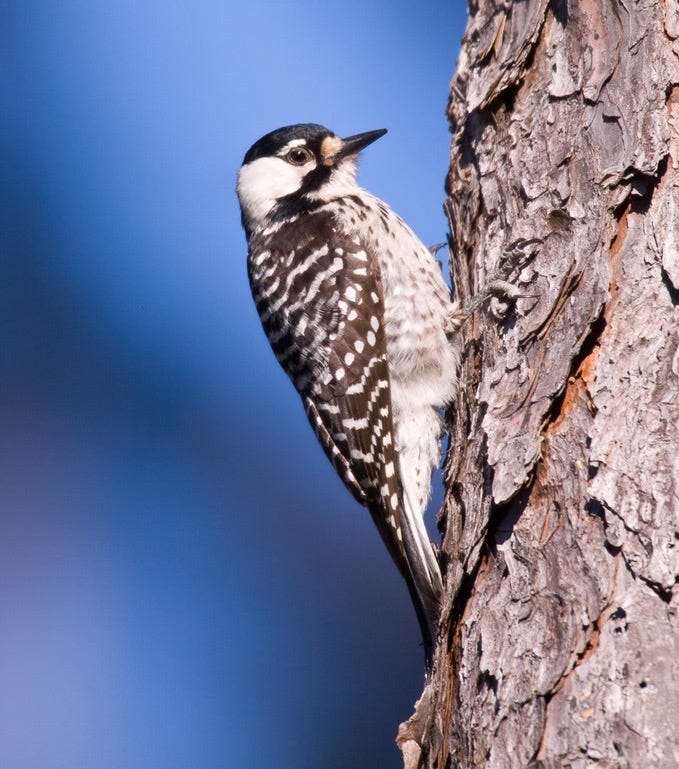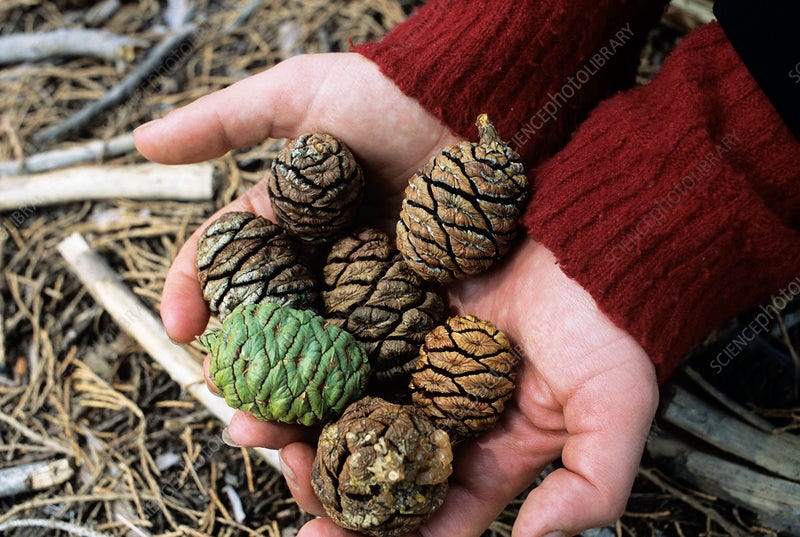Longleaf Pines: new hazards and new hopes for this icon of the American South
Assisted migration may save this once abundant tree threatened by climate change
Of all the natural habitats of the South, some of the most distinctive are the stands of longleaf pines (Pinus palustris). Tall, usually maturing to a height of a little over 100 feet, these pines stand sparsely amid the savannahs that develop beneath their branches.
Besides their beauty and utility as a source of timber, pitch, and turpentine, longleaf pines foster a great deal of biodiversity. The forests they create are one of two types of pine forests on which the endangered red-cockaded woodpecker is dependent. The savannahs fostered by the pines are among the habitats of the endangered gopher tortoise, as well as the endangered black pine snake. Longleaf pine forests are also considered carbon sinks because the trees can live up to 450 years.
Like most everything else in the natural world, the range of longleaf pines has been reduced by humans in the last couple hundred years. They once occupied around 37 million hectares of the South, in a region about the size of the state of Montana that stretched in a wide crescent from east Texas to North Carolina and dipping into northern Florida.

Up into the 19th century, longleaf pines dominated the South’s Coastal Plain forests, between 25 and 30 million hectares in all. By 1935, that figure dropped to 7.1 million hectares, dropped again to 4.9 million hectares by 1955, and reached a low point of 1.3 million hectares in the mid-1990s.
The pines were reduced by over-logging, but the most serious threat has been fire suppression. Longleaf pines rely on fire to maintain their stands and their ecosystems. Mature pines are resistant to low-intensity ground fires, which clear away competing species, such as oaks. Fire suppression in longleaf pine woods leads to the establishment of hardwood trees and shrubs that inhibit longleaf pine reproduction. In one scientific observation, fire suppression led to the complete elimination of the pines in an ecoregion. Intense fires or frequent fires can also disrupt the pines’ ecosystem.
The pines now occupy less than three percent of their original range. Currently, isolates stands of longleaf pines remain in southern Mississippi, Alabama, and Georgia, with some of the more expansive tracts found in northern Florida.
Hurricanes
Hurricanes have crashed against Florida and the rest of the South for millennia, and longleaf pines have adapted to this disturbance regime. While some pines succumb during a hurricane, most pines survive the pounding winds and rain. Like fire, occasional hurricanes are actually part of the pines’ regenerative cycle. The few trees felled by a storm change patterns of litter accumulation and open up sunlight to the forest floor, both of which can stimulate growth.
While the pines have historically withstood and even benefitted from hurricanes, they may be imperiled by storms supercharged by climate change. In 2021, Frank S. Gilliam, a professor of biology at the University of West Florida looked at the trends of hurricanes hitting Florida as well as the effects these trends have on the longleaf pine. Using records going back to 1850, Gilliam found a steady upward trend in the frequency of storms and hurricanes hitting Florida since the mid-19th century.
There is natural variation in the number of hurricanes year by year, but looking at multi-year averages over the last 170 years, trends have emerged. The number of Florida hurricanes increased from 1850 until 1910, decreased slightly until 1930, and increased sharply until 1955. A slight decrease followed until 1990, but since then the number of hurricanes has increased substantially. Gilliam says, “Other than in 2006 and 2014, since 1990, there have been no years with fewer than six tropical storms; prior to 1990, most years had fewer—often far fewer—than six storms.”
The longleaf pines are also threatened by more intense hurricanes, which was another trend found by Gilliam’s research. Both the intensity and frequency of the hurricanes correlate with increases in air and ocean temperatures, a result of global heating. Professor Gilliam published his findings in Frontiers in Ecology and Evolution.
Assisted migration brings hope for the pines
I touched on the topic of assisted migration in my last Green Dispatch post. Briefly, species migration is when trees, snakes, whales—any plant or animal—changes its range due to environmental pressures. Because of climate change, half of all species are shifting their range. As temperatures warm, species are transitioning to more northern and higher elevation habitats in the Northern Hemisphere; the Southern Hemisphere sees species transitioning south and to higher elevations. Species are also moving as global warming makes their natural range wetter or drier.
In many cases conditions are changing faster than some species’ ability to migrate naturally. This can bring about local extirpation or complete extinction for these species. In such cases conservation organizations and government agencies perform assisted migration.
The Nature Conservancy is planting longleaf pine seedlings to reestablish the tree in some of its historical northernmost regions of Virginia. Current assisted migration programs, which the Conservancy is performing in conjunction with other conservation organizations and government agencies, include reestablishing a longleaf pine forest in the 3,200 acres of the Piney Grove Preserve in Virginia’s Sussex County, which the conservancy acquired in 1998.
The conservancy is also planting longleaf pine seedlings in former corn and soybean fields along Maryland’s Eastern Shore. This will extend the habitat of the pines more northward in what is expected to be their new, climate-changed range. The assisted migration includes maintaining the pines’ fire regime with prescribed burns.
What do you think? Is assisted migration necessary? The Nature Conservancy may be successful in moving longleaf pines more northward, but can you move an entire ecosystem? Will the red-cockaded woodpecker, gopher tortoise, and black pine snake be able to make the journey northward with the pines? How might these migrating species affect their new habitat? Please let me know what you think by clicking the “Leave a comment” button below.
If you found this post of interest, you might be interested to read about climate change affecting other North American forests.
Western forests feeling pressure from climate change
Scientists in the United States looked at the effect of climate change on forests in the American West. As reported in the journal Fire Ecology, they found that increased fire frequency may affect the forests’ ability to renew themselves. More fires are occurring in part due to warmer, drier conditions brought about by climate change.



